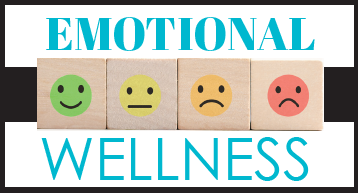Which Candidate Would Be Best for US-Israel Relations?
Dave Gordon
As the 2024 presidential election approaches, one question of special concern to Jewish voters is which candidate – Vice President Kamala Harris or former President Donald Trump – would be better for U.S.-Israel relations. Both have expressed strong support for Israel and the Jewish people, yet each has faced scrutiny over the depth of their commitment.
At the heart of this complex issue lies a number of competing priorities: maintaining America’s strategic alliance with Israel, addressing the Iranian threat, combating rising anti-Semitism, and potentially brokering peace in the Middle East. As voters weigh their options, they must consider not just the candidates’ rhetoric, but their track records and likely policy approaches.
Harris’s Record
Harris has voiced support for Israel’s right to self-defense, while equating it to concern for Palestinian civilians. She attracted criticism, however, when she snubbed Israeli Prime Minister Benjamin Netanyahu when he spoke before Congress and sent a low-level politician to sit in her seat. During her first presidential bid, she did not attend the pro-Israel AIPAC convention, when nearly all the other candidates came to greet attendees. During that bid for the highest office, Harris received the endorsement from J Street, a notoriously anti-Israel group.
Biden, at one point, paused shipments of large munitions to Israel, but reversed course in September, sending armaments to fight Hamas, leaving some guessing if Harris would also flip-flop on this issue as president.
In addition, on Biden-Harris’ watch, on March 25, 2024, the United States abstained from voting on United Nations Security Council Resolution 2728, which called for a temporary ceasefire in Gaza during Ramadan. This abstention allowed the resolution to pass, breaking with the previous U.S. policy of vetoing similar resolutions. The resolution did not condemn Hamas or explicitly condition the ceasefire on hostage release.
Trump’s Record
Trump, on the other hand, touts his pro-Israel achievements, which include moving the U.S. embassy to Jerusalem, standing up for Israel in the UN, recognizing Israel’s claim to the Golan, visiting Israel in his first 100 days as president, and brokering the Abraham Accords.
Regarding Iran, both candidates have talked tough. Harris has backed the Biden administration’s efforts to counter Iranian aggression. While critics maintain that Biden began his presidency softening his stand on the Islamic Republic, originally intending to reboot the Obama-era negotiations with the ayatollahs.
For his part, Trump withdrew from the Iran nuclear deal – which he called a “disaster” – citing how it ultimately left Iran with more time and money to pursue nuclear weapons. This decision was met with mixed reactions. This time around, he has not said much about how he will deal with the largest sponsor of terror.
Combatting Anti-Semitism
Combating anti-Semitism presents another key challenge. Harris has forcefully condemned attacks on Jews and supported efforts to fight hate. Trump’s record is similar, yet critics point to his divisive remarks that some argue trivialize anti-Semitism.
“She’s totally against the Jewish people,” Trump declared of Harris, at the July 24, North Carolina campaign rally. He told a New York radio station on July 30, “Number one, she doesn’t like Israel. Number two, she doesn’t like Jewish people.” In other interviews, Trump said that Jews who support Democrats should “have their head examined,” and he called New York Senator Charles E. Schumer – also Senate Majority Leader – “A proud member of Hamas.”
Meanwhile controversial podcaster Candace Owens, who has been accused of slurring Israel and the Jewish people, was to appear alongside Donald Trump Jr. at a recent campaign event, but was removed from the slate due to pressure from Jewish Republicans. The former president also raised eyebrows when hosting rapper Kanye West at his estate, despite it being known that the entertainer had made anti-Semitic remarks.
On the Democrat’s side, it is no less controversial.
Regarding Pennsylvania Gov. Josh Shapiro, CNN’s John King told Anderson Cooper, “He’s Jewish – there could be some risk in putting him on the ticket,” referring to Shapiro being shortlisted as the potential vice-presidential candidate. In a video podcast for The Free Press, Newsweek editor Batya Ungar-Sargon was certain that Shapiro was not chosen because of anti-Semitism in the Democratic party.
Certain fringe elements of the Democrats have been staunch and fierce in their opposition to Israel, including the small group in Congress known as “The Squad,” rarely admonished by the leaders of their party. The Democrats even gave a podium at the Democratic National Convention to Alexandria Ocasio-Cortez, who in a House floor speech accused Israel of committing genocide, said that Israel was “occupied Palestine,” and advocated for military aid to be withheld.
Responding to Israel’s Enemies and the “Two State Solution”
In Oct. 2023, thirteen progressive Democratic lawmakers signed a petition for a ceasefire in Gaza (code for Hamas to re-arm and re-attack). Neither the president nor the vice president spoke out.
Harris expressed a “both sides” statement when commenting on anti-Israel protesters: “They are showing exactly what the human emotion should be, as a response to Gaza,” Harris told The Nation. “There are things some of the protesters are saying that I absolutely reject, so I don’t mean to wholesale endorse their points. But we have to navigate it. I understand the emotion behind it.” Her vice-presidential nominee, Tim Walz, said in a radio interview that anti-Israel protesters are “speaking out for all the right reasons,” and that more pressure should be applied to Israeli Prime Minister Benjamin Netanyahu to accept a Palestinian state.
Regarding a potential peace agreement, Harris has expressed repeated support for a “two-state solution” while emphasizing Israel’s security needs. Trump – who during his first term proposed a map of two states, and never heard back from the Palestinians – decided then to bypass the Palestinians, to normalize Israel’s relations with Arab states, such as UAE, Morocco, Sudan, and Bahrain.
Ultimately, while both candidates profess support for Israel, their differing worldviews and political pressures could lead to divergent approaches on key issues affecting U.S.-Israel relations. Voters will need to carefully consider how each candidate might navigate these complex challenges.
To get a well-rounded approach, Community Magazine interviewed Dov Hikind, former local New York State Assemblyman (1983-2018); syndicated columnist and political strategist, Warren Kinsella; and U.S.-Israeli presidential scholar and author Gil Troy, to get their take on the candidates’ records and how their policies might affect Jews in the U.S., and Israel.
Dov Hikind
“I always supported the person who I thought was best for America, for the Jewish community, never really a Republican, or Democrat,” Hikind stated. “I always said publicly, without hesitation, that I am a Jew, period. And what’s best for our people is what determines what my position is, nothing else, and it’s that simple.” Hikind is now a registered Republican, but served as an elected official for 36 years as a Democrat.
Hikind added that he understands those who hesitate to back Trump, being “concerned about a guy who behaves sometimes in a way that is really not cool. It’s not acceptable, it’s not proper, it’s not the way we want our kids to behave, much less an adult.”
But the alternative is worse: “The idea of a Harris administration scares the daylights out of me, without a question. To so many of us, Trump was a better friend to Israel. And if you were to ask me, who was the second best, the third best, it would be Donald Trump. That’s how good he was.”
Hikind is heartened when scores of non-Jewish Republican lawmakers across the country support Israel – some who have few Jews in their state. “They are so on target when it comes to American support for Israel, recognizing who we’re dealing with. They know you can’t compromise with terrorists.”
Though President Biden unabashedly calls himself a Zionist, Hikind doubts Harris will be so bold.
From funding the United National Relief Works Agency – that has had terrorists on its bankroll – to holding back shipments of weapons to Israel, Hikind said the Biden-Harris policies needed to tilt to the radicals because they believe, “If we’re going to win in a very close race, we need them on our side.”
Though, for Hikind, Israel is not the only big issue – he believes Trump would also be the best candidate regarding the issues of crime, border patrolling, and national security.
“I know that a lot of people, every presidential election, call it [the election] ‘consequential.’ And I never have called any election consequential. I actually believe this one is.”
Warren Kinsella
Warren Kinsella is the founder and president of Daisy Consulting Group, a Toronto-based firm that engages in paid political campaign strategy work, lobbying, and communications. He was a partner at the law firm of McMillan Binch, in its Public Policy Group, and has also worked as a consultant, journalist, and political Chief of Staff. In 2020, he worked in several states on the victorious Biden-Harris campaign and is now canvasing for Kamala Harris.
Concerning Iran, Kinsella noted that in early September, Avril Hanes, the Director of National Intelligence (DNI is a senior cabinet-level U.S. government official) issued a series of statements that confirmed the Islamic Republic was actively and presently funding protests against the United States, and funding efforts to destabilize American democracy. Around the same time, the Justice Department revealed that it was holding Iran responsible for terrorism that led to the murder of American citizens.
A prospective President Harris would not be able to contradict what the intelligence establishment has concluded, Kinsella said. “There’s no way you can normalize relationship with a nation that is engaged in destabilizing your democracy, period. There may have been a desire within the Democratic Party to lower the heat with Iran. Those days are now gone,” he said.
“So, just by virtue of the statements and the actions of the U.S. government, the U.S. government cannot now turn around and adopt a conciliatory approach towards Iran.”
Kinsella is certain that a Harris presidency would take anti-Semitism seriously, as Harris is married to a Jewish man, and has been to Israel more times than her husband.
“She may not identify as a Zionist in the way Biden does, but you know, by her words and her actions [she shows she is], I draw comfort from that.”
Regarding support for the Gaza war, Kinsella touted that in early September the Biden administration sent $25 billion in military hardware to Israel, and a U.S. Battle Group – “the biggest military formation you can possibly have, to the Mediterranean to ensure that Hamas and Iran do not ramp up their attacks on Israel.”
“That’s not the action of an anti-Semite,” Kinsella said.
In terms of The Squad, the Democrats have “already run candidates, moderate, centrist, pro-Israel candidates, against those people. And those people have lost their nominations, so they’re gone. So, they’re doing it. They may not be doing it out in public, you know, with a meat cleaver, but they’re doing it.”
“AOC [Congresswoman Alexandria Ocasio-Cortez, known for her virulent anti-Semitism]
survived it, but so you know, that her position on a lot of stuff has become much more centrist than it was.”
Kinsella noted that at the Democratic National Convention the parents of Israeli American Hersh Goldberg-Polin (who was held hostage by Hamas and was murdered in September), were given the podium, “and the whole place was crying.”
“The Palestinian types were aggressively seeking a spot on the podium,” but were not permitted.
“Measure them by their actions,” Kinsella insisted. “Forget about their words, forget about their tweets, forget about what they put on Facebook and Instagram.”
As for the so-called “two-state solution” he said, “That’s gone for a long time, in my opinion. And she [Harris] knows that. As long as Hamas is in the picture, you’re just not going to have a two state solution.”
Gil Troy
Gil Troy is an American presidential historian and is a popular commentator on politics and other issues. He is a professor of history at McGill University in Montreal. Troy noted that predicting Harris’s policy “is particularly difficult, because she’s made a conscious decision to try to obscure her positions. I don’t say that as a Democrat or Republican, I just say that as an observer.”
“She’s chosen, tactically, to make this a politics of joy campaign,” he said, “and while there have been occasional ups and downs, fundamentally, each president has understood the importance of supporting Israel, and to the extent that Kamala Harris – part of the Democratic mainstream – one would bet smart money on that staying the same.”
The fear is, both in tone and substance, Troy said. “As vice president, she definitely was very careful to distance herself just a little bit from her boss and be a little bit more of the bad cop to Joe Biden’s good cop when it came to Israel, and to be the one who made sure to try to open up some initiatives with the Arab Americans and Muslim Americans. So, to the Jewish community, that’s a source of concern, because it often was done in a very kind of tit-for-tat way, that established a moral equivalence between Israel, which was defending itself and fighting for its life, and Hamas, which was hiding behind civilians.”
The Party, in general, has become one with the “most vocal anti-Semitic and anti-Israel minority in the way the Republican Party had 30-40 years ago,” Troy said. He lamented that “not enough people in the Party have taken them on. She’s less likely than Trump to fight left-wing anti-Semitism.”
What Troy referred to as a “Democratic blind spot” is the Party’s tendency, since the Obama administration, to “be less hard on the mullahs” with a foreign policy establishment that “have not done enough to use soft power to try to undermine the Iranian regime.” Troy said this limp-wrist response was demonstrated at two critical moments, in 2009’s Green Revolution, and then more recently under Biden, during the Mahsa Amini protests for women’s rights. Troy believes that a Trump administration would have seized the chance to ramp up pressure on Iran.
But when asked if there was a vulnerability that both candidates share concerning Israel, he said that they are both likely to want to claim a victory in pushing for an end to the war with Hamas and will exert pressure on Israel to do so.
Troye is further worried that a Harris administration would be “so addicted to the two-state solution and October 6th thinking,” flawed in the notion that “if the Palestinians only had a state, then it would all be good.”
“The smart money would definitely be,” he said, “Harris being stuck on that same 30-year-old failed vision and policy, not even being willing to open a taskforce to look at changing the language to ‘two democracies for two people,’ which would automatically put more pressure on Palestinians.”
On Nov. 5th, the choice is yours – decide wisely, balancing what you want most in a candidate. Most importantly, exercise your right to cast your ballot.












